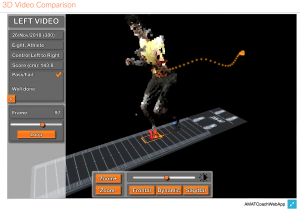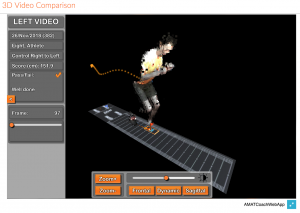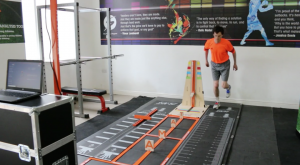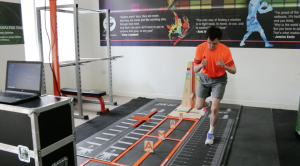Movement Imbalances
During dynamic activities that commonly occur in sport such as running, jumping and changing direction, poor neuromuscular control has been highlighted as a key contributor to injury (Hewett et al., 2005). One aspect of poor neuromuscular control, “leg dominance” has been defined as an imbalance between the two lower extremities in strength, co-ordination and control (Myer et al., 2004). Imbalances of greater than 15% have been deemed as a key predictor of injury (Crosier and Crelaard, 2000). For this reason, screening our athletes for muscular imbalances has become the norm in an attempt to identify and correct any asymmetry. To screen for injury risk factors in terms of leg dominance, single leg hop assessments are recommended (Read et al., 2016). Single leg assessments may include single leg countermovement jumps, single leg squat jumps, single leg broad jumps, crossover hops, single leg hop for distance, triple hop for distance and more. These are valid due to the fact that dynamic multi-directional movement in sport is not always performed from bilateral positions (Hewit et al., 2012).


Figure1. Examples of the 3D video analysis of single leg jump assessments accessible in the AMAT Performance System
Our AMAT Performance system assesses leg asymmetry through single leg jumps for control (maintain centre of mass within base of support) and single leg maximal jumps (single leg horizontal power), but in what we feel is a more recognisable movement pattern. Single leg movements in sport usually occur in a cyclical-alternating motion where movement originates on one leg and finishes on the other. Whilst we acknowledge the value of ipsilateral hopping, we feel single leg movements using alternate legs are more representative of key athletic movements such as running. Following the screening using the AMAT system, having automatically and accurately measured the distance on both left-to-right leg, and right-to-left leg jumps, the system self-analyses and reports an asymmetry index if a neuromuscular deficit is found. This includes individualised feedback and specific training plans to attempt to address any neuromuscular imbalances, potentially reduce the athlete’s injury risk, and improve their movement skills.


Figure 2. Single leg control jump assessment in the AMAT Performance System
For more information on our exciting new product please visit www.system.amatperformance.com
